Building a Super Cub-type airplane seems to be the “in” thing to do these days, so it is no wonder that Javron, a company that has been building Super Cub components for others for many years, decided it was time to transition into the complete kit market. Javron’s focus is on reproducing the Super Cub in its purest form. Owner Jay DeRosier incorporates some of the popular modifications to be sure, including strengthening the structure to allow for a higher gross weight, but he believes that the original Super Cub is a pretty good airplane just as it is. This approach allows him to produce a very light and very original looking and flying plane.
The Javron Super Cub comes with a gross weight of 2200 pounds and an empty weight of 1050 or so, depending on how the builder puts his or her plane together and whether the builder chooses the standard 24-inch cabin width or the 28-inch width so popular with Experimental Super Cub builders now. The wider fuselage adds about 30 pounds, but by going with the lighter Lycoming O-320 engine, the builder can make up most of that weight. Jay also offers a choice of traditional rounded wingtips or squared-off wingtips, which allow for larger flaps and ailerons, resulting in a somewhat slower landing speed.
Javron’s attention to maintaining original PA-18 standards makes for a plane that flies as much as possible like a Piper Super Cub. This means some Super Cub-type kits will produce planes that will fly slower and land shorter, but the performance of the original Super Cub has a long history of being up to the task of bush flying all over the world. In most cases the differences between pilots will probably have a greater effect on landing and takeoff distances than the differences between the Javron kit and its various competitors.
Javron has sold over 30 kits, with three now flying. In addition, Javron made components for Smith Cubs (later Turbine Cubs of Wyoming) for many years, so it can borrow some of that much-longer history for itself. In addition to their original-style Super Cub, Javron offers a wide array of custom features to make each kit exactly the way the builder wants it. This is important in the current kit market because just about every single Super Cub builder seems to have a unique idea of what the perfect plane should look like. Javron thus combines a very traditional base design with the flexibility to meet a wide variety of customer desires.
Larry Vetterman used a carbon-fiber plenum system to route cooling air over his O-320 engine. If you look closely, you can see the automotive spark plugs in the lower cylinders.
Larry Vetterman’s Javron Super Cub
The first Javron kit to be turned into a flying airplane was built by Larry Vetterman of Vetterman Exhaust fame. Larry undoubtedly has more exhaust systems on Experimental airplanes than all of his competitors put together. There is hardly an RV in the air that does not sport some of his handiwork. That is pretty well known, but what may not be so well known is that Larry spent much of his life before he went into the exhaust business flying Super Cubs for the U.S. Department of Agriculture doing predator control. This involved thousands of hours of flying low and slow in PA-18s. The affection he developed for the Super Cub drove him to seek out the kit that most faithfully reproduces his favorite airplane—the Javron Super Cub.
Lest anyone think that Larry was always aligned against nature’s carnivores, he played a very important role in reintroducing wolves into Wyoming and Montana. His work to capture wolves in Alberta, Canada, and release them into the wild here in the United States was vital to the success of that program.
All of this means that when Larry tells you that his Javron Super Cub flies like a PA-18, you can believe him. After spending some time flying with him, I must agree. If you didn’t know it was an Experimental copy of a Super Cub, you couldn’t tell by flying it. Larry loves that about his plane, but obviously not everyone has to agree on that point. Other kits may offer slightly better performance in some respects than the Javron, but none remains truer to the original Piper concept. Larry wanted what the Javron plane did best and cared little about their competitors’ approaches to the Super Cub concept. He got exactly what he wanted, and I would be the last to fault him for his choice. Other Super Cub-type kits have their own strengths, meaning that a Super Cub kit buyer needs to do his or her homework to understand what each kit manufacturer brings to the table and select the kit that best matches the type of flying and the feel that suits him or her.
Needless to say, Larry used a Vetterman exhaust system on his Super Cub. You can see one of his new muffler/cabin heat muff units. The one on this side provides cabin heat; the other side supplies warm air for carburetor heat.
If there is one thing Super Cub drivers agree on, it is that lighter is better. Lighter means you can haul more gear. Lighter means you can take off and land shorter. When things are really tight and you really need to go, lighter can mean the difference between making it or not. With that in mind, Larry began a quest to build the lightest Super Cub he could. You may not wish to follow his example in every case, or you may simply want to enjoy more creature comforts than he, but you have got to give him credit for building a really light plane. Here’s how he did it.
Lexan covers over the elevator jack screw inspection openings make preflighting these important components very easy.
First of all, he did nothing that would add weight to the basic Javron kit. Then he opted for the Lycoming O-320 engine, which is less powerful, but also lighter than the more popular O-360. Attached to that is a Catto composite prop, which is not only light and durable, but also pulls like a tractor. With a diameter and pitch of 83×41, he can over-rev the engine a bit, but it surely gets him off the ground quickly. Larry had Javron build him a 13-rib wing, which is the way Piper did it for the first several years of Super Cub production. Since he registered his plane with a Light Sport gross weight of 1320 pounds, there is no need for the extra strength of the more modern 16-rib wing. The wings also sport carbon fiber leading edges, an option now available from Javron.
His most controversial weight saving came from using 3/32-inch cable for all the controls instead of the standard 1/8-inch cables. A number of Light Sport manufacturers do this, but you will not find many other Super Cubs so lightly rigged. Another weight-saving option that Larry chose was to use Oratex fabric to cover his plane. This alone probably saves about 30 pounds because it completely eliminates the paint, except on metal surfaces. The other advantage to Oratex is that it does not use harsh chemicals such as acetone or MEK, two solvents to which Larry has developed great sensitivity. That is why he chose the system. Oratex has a significant track record in Europe, but it is fairly new to the United States market. In all honesty, it does not look as good as a painted plane, but 30 pounds is a lot of weight to save.
Another custom touch was the use of carbon fiber plenums from Renegade Light Sport to direct cooling air over the engine. Besides working extremely well, they are very light. Larry did modify them by installing removable panels to make spark plug access easier. While on the subject of spark plugs, Larry had his magneto caps rewired by G3 Ignition to use automotive wires and plug caps to go with the Denso spark plugs he uses. This modification promises to save a lot of money on spark plug replacement and saves almost a half a pound of weight.
A touch that could easily escape a casual observer is the .060-inch Lexan windows instead of 1/8-inch acrylic that most people use. A titanium firewall would also fit into that category. It alone saves two pounds.
A minimal instrument panel and a host of other minor weight savings yielded an impressively light plane with an empty weight of 894 pounds. Most builders would probably be thrilled with a plane that weighed 100 pounds more than that. Using a Light Sport gross weight of 1320 pounds gives him a useful load of 426 pounds. With full fuel, that only gives him 210 pounds in the cabin, but that will accommodate Larry and a reasonable amount of camping gear, or by offloading some fuel, a second person.
A very simple VFR panel and a Garmin 496 provide all the information Larry needs for getting his plane where it needs to go. The minimalist design also helps to keep weight down.
What’s in the Box?
The Javron kit includes a completely welded and powder coated fuselage, assembled round-tip wings with flaps and ailerons, two 18-gallon fuel tanks, struts and all hardware, landing gear, boot cowl and engine cowl, windshield and windows, controls with cables and pulleys, brakes and pedals, floor boards, and a complete tailwheel assembly. Not included are the engine mount, engine and engine accessories, propeller, fabric covering and paint, interior items such as seats and seat belts, tires, instruments and instrument panel, and lights.
For a builder who wants to get everything in one place, Jay will supply just about any part you may need, at an added cost, of course. Javron’s accessory prices are pretty reasonable, but for a builder who is really trying to save money, it may be better to scrounge your own parts so you can take advantage of any bargains that may appear. Like so many other things in Experimental airplane building, it is a matter of trading time for money.
Javron provides the wings to the customer pre-assembled with fuel tanks installed. Round wingtips are standard, but squared-off wingtips are also available. Photo courtesy of Javron, Inc.
What Does it Cost?
The Javron kit costs $42,500 plus shipping from Minnesota, but there are obviously other costs that must be added to this amount before a flying airplane will emerge from your hangar. The kit includes the fully welded fuselage, landing gear, struts and wings, essentially all custom made items needed to build a PA-18 look-alike. It does not include many off-the-shelf items such as tires, fabric covering, and other stock parts. The kit also does not include large items such as the engine, prop, and instrument panel. Jay will help you procure these items if you wish, and has been building engines for several of his recent customers.
The total cost to build any plane will depend largely on how it is equipped, with some builders spending a great deal of money on avionics and others going the minimalist route, along the lines of what Larry did. Similarly, engines can run from a used Lycoming O-320 or 360 that can fairly easily be found for $12,000 or so—even less for an O-320—to custom 200 hp+ engines costing over $30,000. Most people agree that the fixed Catto prop is the way to go, but there are those who would opt for a constant-speed composite prop such as the Whirl Wind 200A at $9,770. Super Cub drivers also love their big tires, which is another place where extra money can be spent. With all of that in mind, below are three options and the estimated costs to put together a Javron Super Cub for yourself. These are just samples of what can be done.
The actual list of possibilities is almost endless, and opportunities to spend more or less are present at every level. It is going to be very hard for even the most frugal builder to put a plane together for much less than $80,000, but a budget of $110,000 or so can get you a decent plane to fly that will take you just about anywhere you might want to go. About $150,000 will allow you to add a fancy instrument panel with the latest Garmin G3X, 29-inch Alaskan Bushwheels and Baby Bushwheel tailwheel, fancy paint, extra fuel, and more. And lest we forget, some assembly is required.
Building the Javron Kit
Cubs in general are not hard planes to build, and the Javron Super Cub is no exception to that rule. The plane is fairly simple and straightforward in its design, much simpler to build than the typical RV, with the possible exception of the RV-12. A first-time builder could reasonably expect to put a Javron Super Cub together in about 1000 hours. Builders with significant fabric experience could easily cut some time off that. On the other hand, if a major trophy interests you, expect to double or triple that time.
Right below the big Catto composite prop sits an RV intake scoop. Larry likes the RV intake system, so why not use it on his Super Cub?
The one thing hampering an inexperienced builder is a lack of an assembly manual. As of this writing Javron is using Piper PA-18 assembly drawings to guide builders. If you are used to looking at plans and have a pretty good idea of what to expect, these drawings are sufficient. However, if you are not so blessed, you may find that you need extra help to get your plane put together. There is no shortage of Super Cub expertise out there, but it may take some extra effort to find it when you need it. Javron is working on an assembly manual as this is being written, so hopefully, this deficiency will be cured in the near future.
Another slight problem is that the Javron kit is not yet on the FAA-approved list for amateur-built status. Jay is working with the National Kit Evaluation Team, but the process is not yet complete as of this writing. This does not mean that your plane can’t be registered as Experimental/Amateur-Built because so far three have, but it will take a little extra work with your DAR to complete the process. This lack of approval has scared off more than one customer, according to Jay, but it should not. It is a small and solvable problem.
Larry Vetterman’s Javron Super Cub is ready to go on its next adventure or just fly around the local area for a few minutes. The grass strip at Hot Springs, South Dakota, is ideal for the Super Cub’s big tires.
How Does it Fly?
“It flies like a Cub” has become a clich, much like “It tastes like chicken.” And just as with the chicken remark, way too many planes that don’t really fly like a Cub have been so described. However, in this particular case, it really does fly like a Cub because the Javron Super Cub was built from original PA-18 drawings to be as much like that plane as possible.
The vortex generators many builders, including Larry Vetterman, add to the wings and the bottom of the horizontal stabilizers allow the plane to fly five or six knots slower than the original Super Cub, but the basic feel of the plane is not otherwise altered all that much. The controls are reasonably well-coordinated, but do require some effort to move them in flight. Turns need to begin with a little rudder to keep the ball centered. Takeoffs and landings also require significant rudder input if you plan to keep things going in the right direction. There is nothing exceptional in this, but you must learn quickly that the rudder pedals are there for a reason. The plane will fly well at amazingly slow speeds, but as the saying goes, it flies just fast enough to kill you, so due respect must be paid to the airspeed indicator (or better yet, angle of attack indicator) if you wish to remain in one piece.
Super Cub drivers chuckle a bit, at least to themselves, when someone asks them how fast their planes will fly because to even ask the question is to fail to understand their mission. If you are in a hurry, go build a Lancair or maybe a Harmon Rocket. The Super Cub is not designed for speed. The relevant question is, how slowly will it fly? But to answer both questions, best cruise for Larry’s plane with large tires is 100 knots, but a more economical cruise setting will yield about 90 knots. On the other end, the full-flaps, power-off stall speed (Vso) is about 33 knots. That means that takeoff and landing rolls can be completed in the length of a football field, often with room to spare. That is what Super Cub drivers really care about.
While ordinary pilots look down from several thousand feet at a 100- yard-long sandbar and think, I couldn’t even crash my plane in such a small space, the Super Cub pilot thinks, I’ll just set my fat tires on the water about 50 feet from shore and roll out halfway down. That is what this plane is for. If that is what you want, this is a kit worthy of your consideration. If not, there are many planes that will cover ground a whole lot faster.

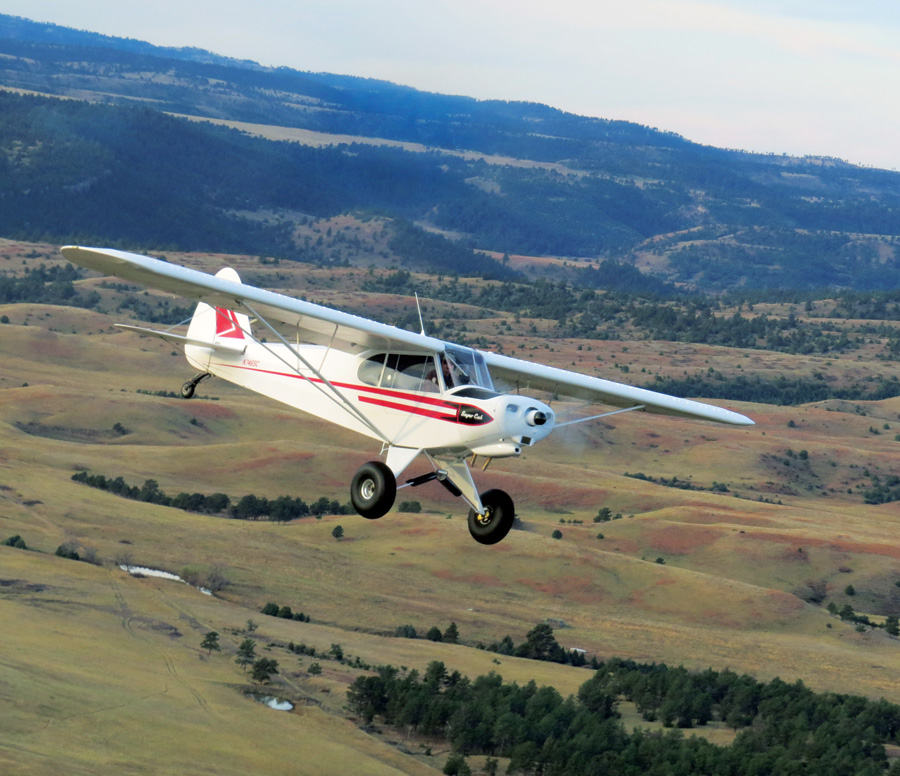
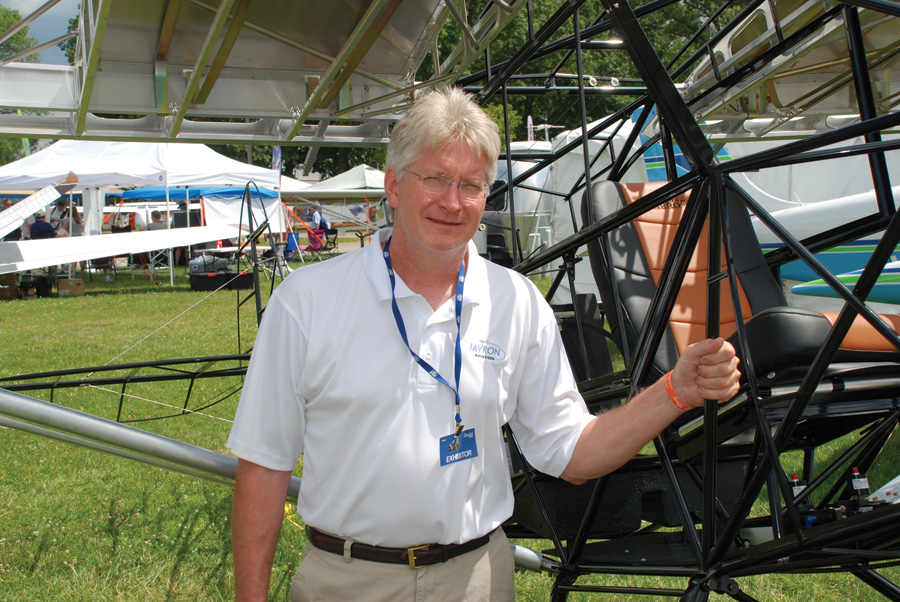
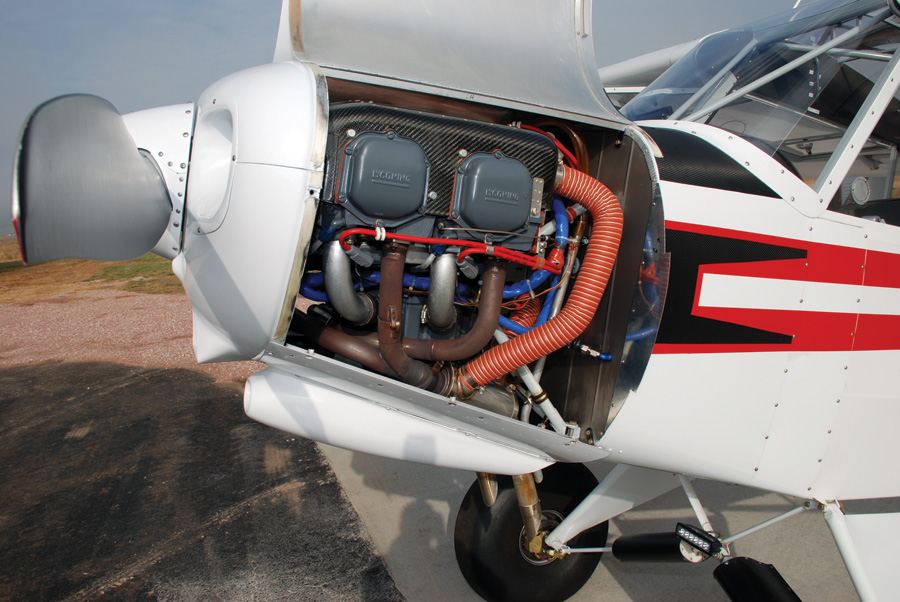
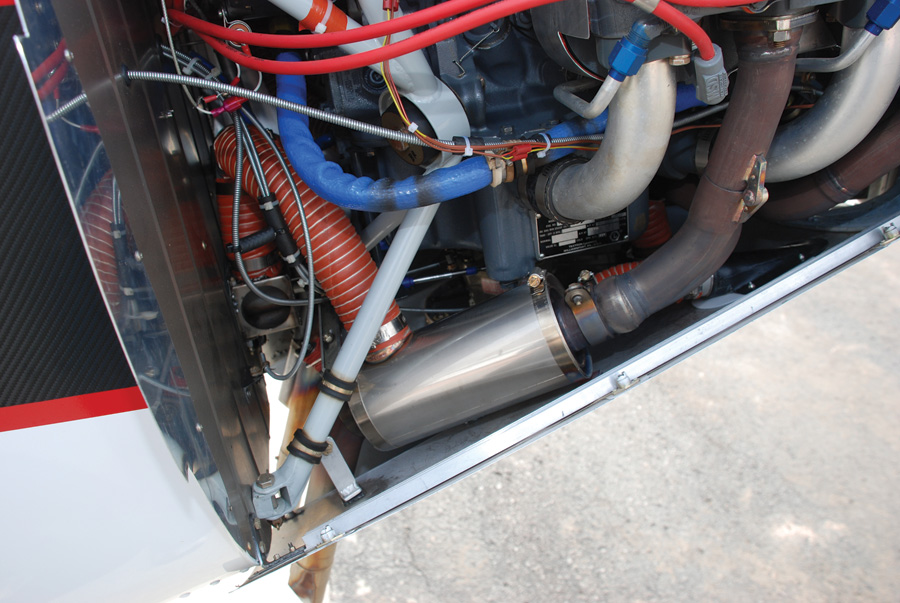
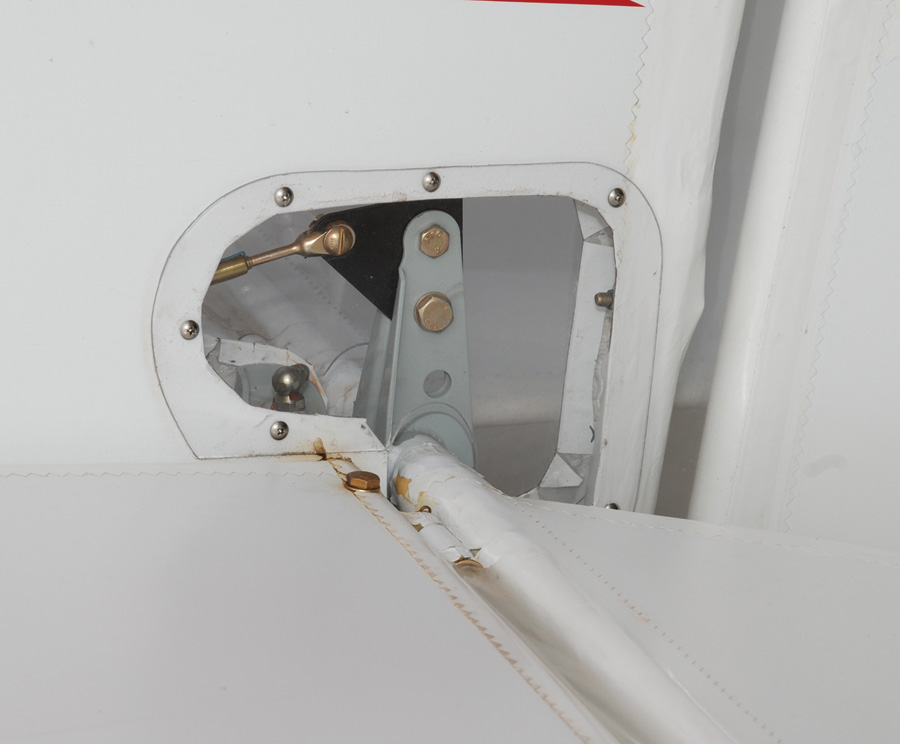
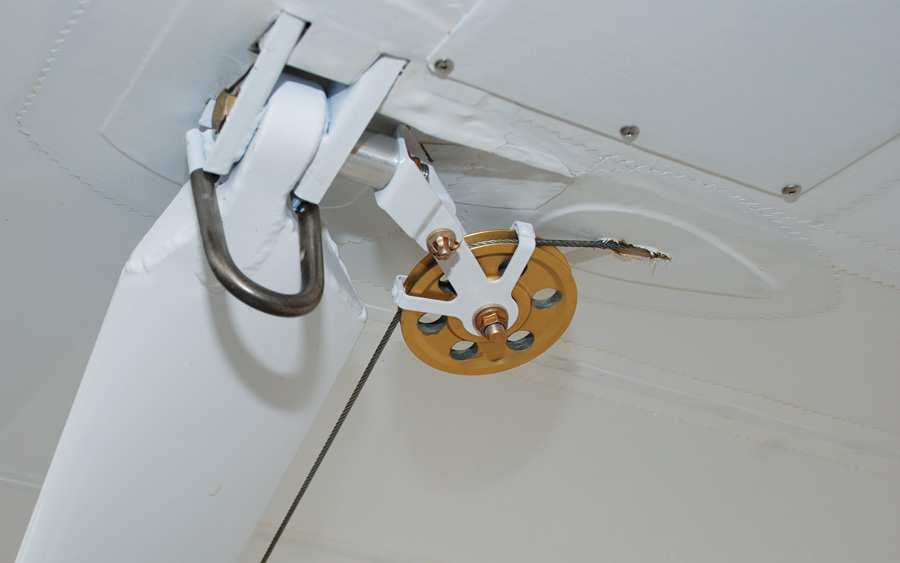
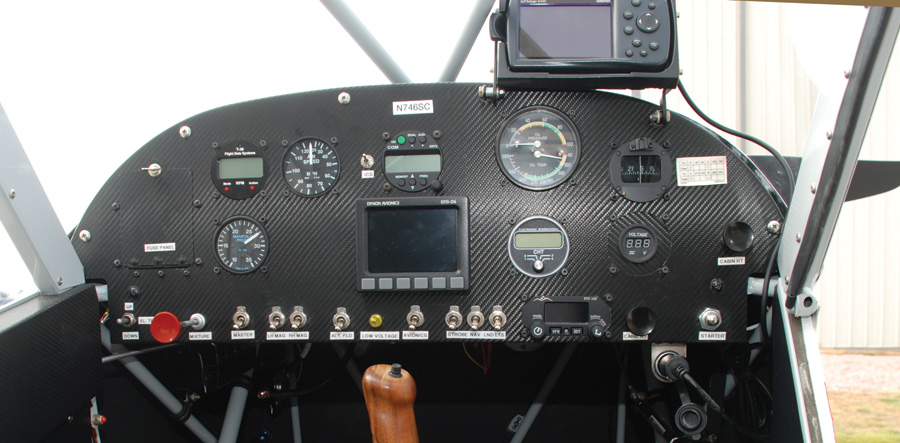
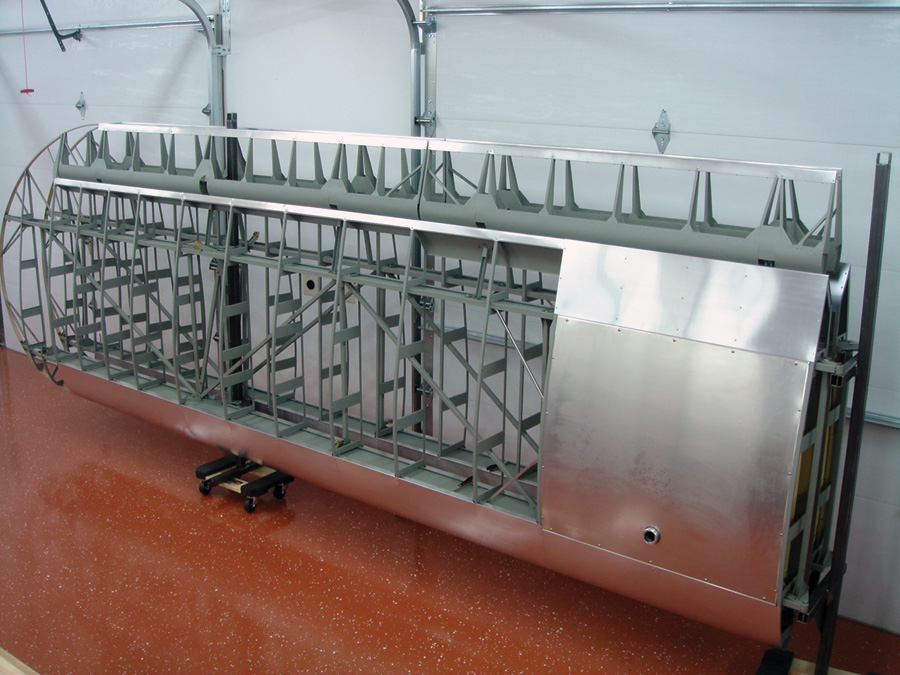
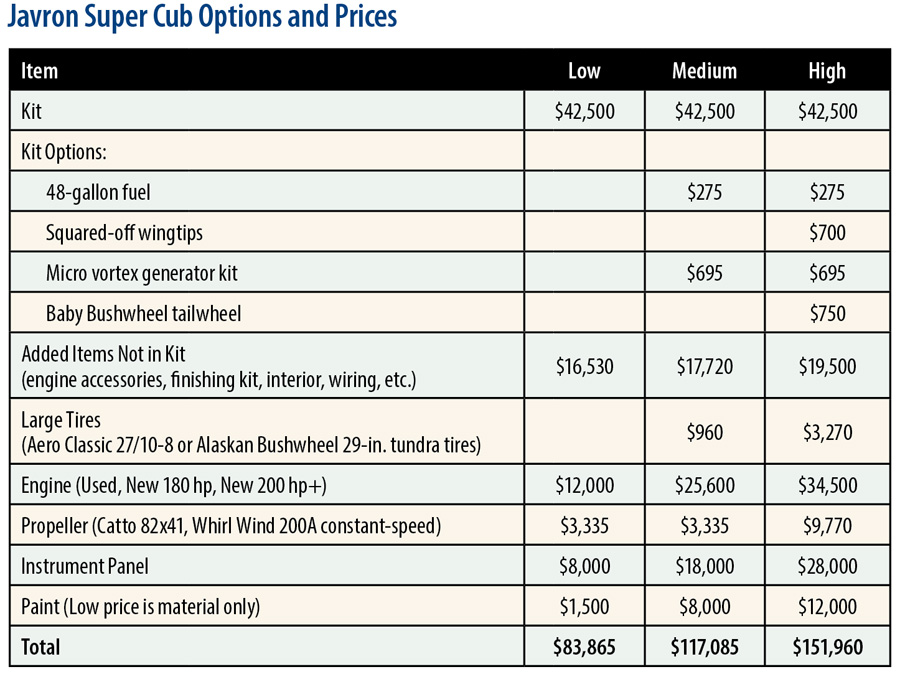
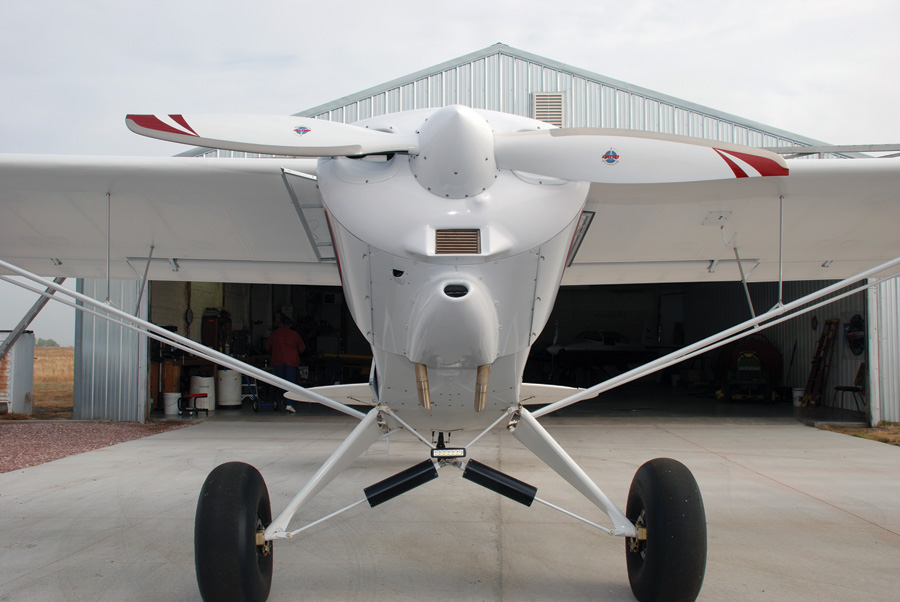
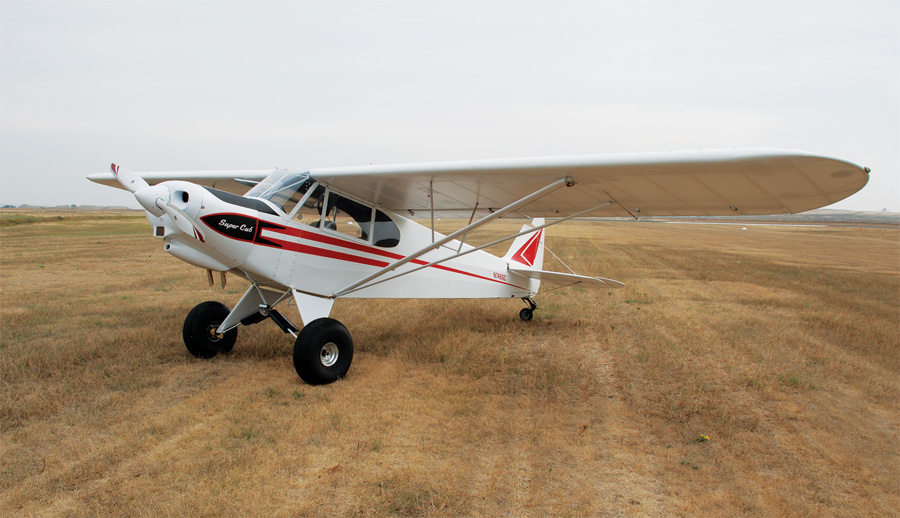
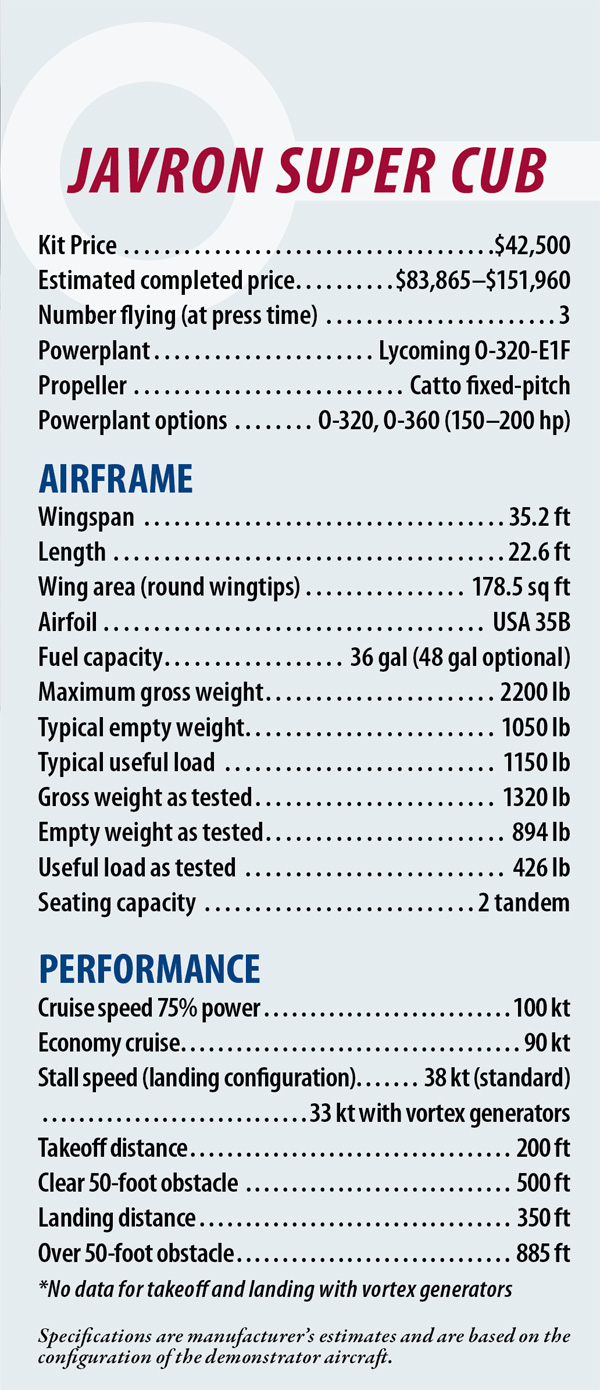
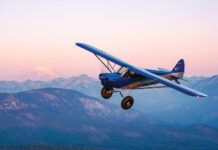
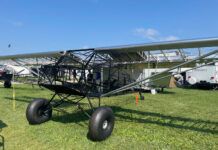
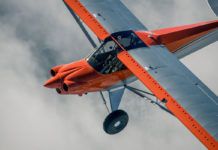
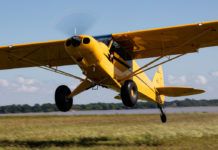
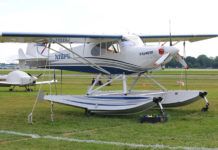
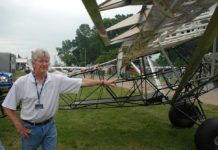
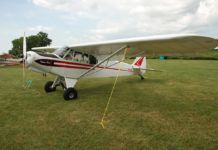
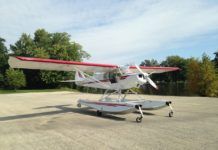
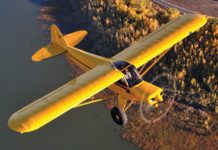
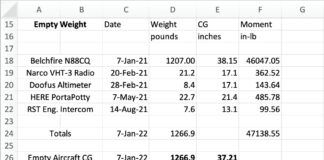
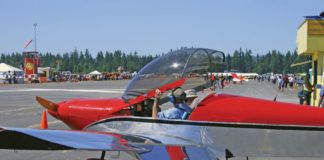
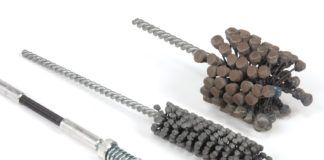
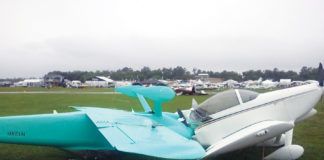
Where can i get the fiberglass wingtips for the PA-18 square wings ?